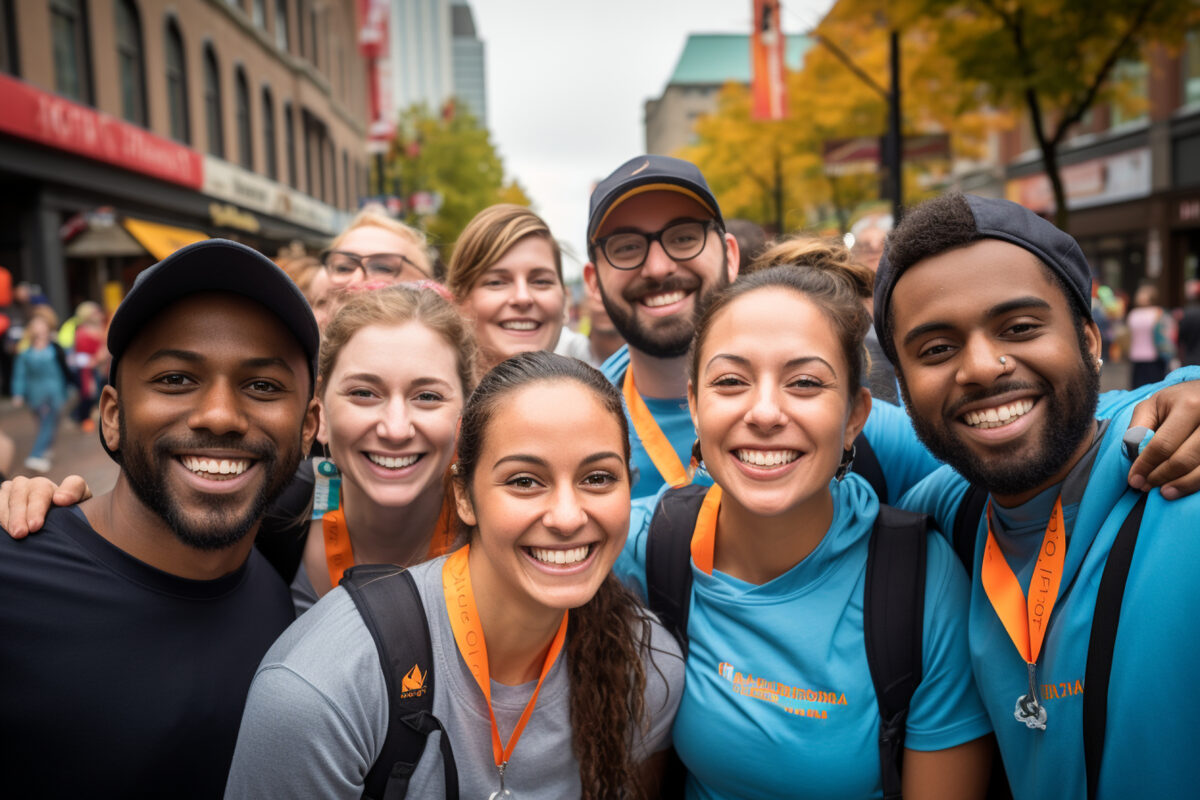Boost Your Donations: Pro Tips for Tackling Peer-to-Peer Fundraising Challenges
Are you struggling to inspire donors and fuel your peer-to-peer fundraising program? Discover strategies that will not only overcome these challenges but also significantly increase the donations you receive. Read on to crack the code for maximum impact and sustainability.
Foreseeing the Bumps in the Road: An Intro to P2P Fundraising Challenges
Peer-to-peer (P2P) fundraising provides a powerful way for nonprofits to engage supporters and raise money for their cause. However, it’s not without its challenges. A study by Social Fundraiser found that 69% of P2P fundraising participants faced barriers in meeting their goals. This highlights the need for nonprofits to understand the common pitfalls and have strategies to address them.
P2P fundraising enables nonprofits to mobilize fundraisers within their existing networks of supporters. By empowering advocates to fundraise on their behalf, organizations can increase engagement and tap into new donor bases.
However, the Social Fundraiser study makes it clear that many participants struggle to fundraise effectively. Without addressing these challenges, nonprofits miss out on realizing the full potential of P2P campaigns.
Why Staying Social and Going Mobile Can Make All the Difference
Social media and mobile platforms play a critical role in successful peer-to-peer fundraising campaigns. According to industry data, over 50% of all nonprofit website traffic now comes from mobile devices. This underscores the importance of having an engaging social media presence and easy-to-use mobile interfaces for fundraising initiatives.
With mobile dominating the digital landscape, nonprofits must leverage these platforms to empower fundraisers and donors. Campaigns should be optimized for mobile browsing and donations, with seamless integrations across social platforms. Creating shareable multimedia content tailored for social media encourages fundraiser engagement and viral promotion of campaigns.
The key is making participation fun and frictionless. Social fundraising campaigns allow donors to rally around individuals through status updates, photos, videos and more. With the right mobile-first strategy, nonprofits can transform peer-to-peer fundraising into an interactive social experience that drives results.
Common Fundraiser Pain Points
Asking for money can be an uncomfortable experience for many people involved in peer-to-peer fundraising campaigns. In fact, studies show that up to 40% of fundraisers who didn’t meet their goals cited discomfort around soliciting donations as a significant hurdle.
Fundraising requires putting oneself out there and making an appeal to friends, family, colleagues or even strangers. This act can create anxiety, self-consciousness, and reluctance. Many fundraisers feel awkward promoting their cause or event, even if it’s for an organization or issue they care deeply about.
There are also psychological factors at play that hold people back from being effective fundraisers.
Some common mental blocks include:
- Fear of rejection – Worrying that people will say no or ignore the ask
- Imposter syndrome – Feeling unworthy or undeserving of support
- Lack of confidence – Doubting one’s ability to persuade and influence
- Discomfort with vulnerability – Difficulty opening up and sharing real needs
The key is to recognize these inner obstacles and develop strategies to overcome them.
Here are some tips to help fundraisers push past the psychological challenges:
- Reframe asking as inviting – Focus on including others in a collective effort rather than putting them on the spot.
- Share your “why” – Connect the cause to your personal values and passion to spark others’ interest.
- Practice your pitch – Gain confidence through preparation and repetition.
- Set a bold goal – Aim high to stretch yourself and attract ambitious supporters.
- Report progress – Broadcast achievements to build momentum and prompt peers to give.
- Give first – Lead by example and get the ball rolling with your own contribution.
With the right mindset and techniques, fundraisers can transform what feels like a burden into a rewarding experience of community, purpose, and achievement. The key is to replace hesitation with proactive enthusiasm and authenticity.
Thinking Outside the Box: Creative and Seamless Event Ideas
Introducing new and creative event ideas can reinvigorate peer-to-peer fundraising efforts. Organizations should consider “wrap-around events” that provide a seamless fundraising experience integrated with meaningful activities.
For example, a giving campaign could be paired with a memorial event honoring past members or volunteers. This combines fundraising with a chance for the community to come together in remembrance.
Other event types that can enhance peer-to-peer efforts include:
- Tributes
- End-of-year fundraising celebrations
- Contests
- Races
- Tournaments
- Galas
- Community service days
Getting creative with events provides variety in the fundraising journey. It empowers participants by giving them something fun and social to invite friends and family to. Events also help tell the story behind the cause.
Most importantly, seamlessly integrating events with peer-to-peer fundraising removes barriers and makes the experience more natural. Rather than directly asking for money, participants can share their campaign while taking part in a larger community event.
The Flipcause Solution
Flipcause provides innovative technology solutions to enhance the participant experience, accelerate fundraiser ramp-up, and enable efficient prospecting for team captains and top fundraisers.
- By leveraging their Unlimited Human Support model, Flipcause Concierge is able to create customized campaigns that motivate and engage participants.
- Features like Activity Tracker & Reporting help identify major gift prospects to maximize fundraising potential. This allows organizations to quickly build strong fundraiser teams and tap into new donor bases.
- With Flipcause, organizations can reduce the friction in the signup process with flexible and intuitive tools. This enables faster fundraiser onboarding so participants can immediately start activating their networks.
- Seamless social sharing capabilities allow fundraisers to easily spread the word across all their social channels.
By addressing key pain points in the participant experience and providing data-driven solutions, Flipcause helps P2P campaigns leapfrog to the next level of fundraising success.
Keeping Spirits High: How to Motivate Your Fundraisers
Engaging and motivating participants is critical to the success of any peer-to-peer fundraising campaign. Organizations should leverage strategies like matching gifts, milestones, and notifications to incentivize donors.
- Setting incremental donation targets and sending updates when they are achieved can make the fundraising progress feel more tangible.
- Sending personalized notifications and reminders to participants based on their activity helps sustain engagement. This includes thanking donors after they give and reminding less active fundraisers to continue soliciting donations.
Building social connections and community around fundraising efforts is equally important. Tools that allow participants to create individual or team fundraising pages and share updates on social media facilitate this.
Participants should also be encouraged to form teams and foster friendly competition. The social element enhances accountability and makes the experience more engaging for fundraisers.
Overall, the key is making the fundraising process rewarding for participants through incentives, updates, social connectivity, and recognition. This results in a more dedicated and productive network of fundraisers.
Wrapping Up
Peer-to-peer fundraising can be challenging, but with the right strategies and technology, it can lead to highly successful campaigns. The key takeaways are:
- Social media and mobile platforms are critical for connecting with donors. Optimize your content and donation pages for mobile users.
- Address the discomfort around asking for money head-on. Have open conversations and provide psychological support.
- Leverage data and technology using platforms like Flipcause to enhance the participant experience. Faster setup and prospecting lead to better results.
- Motivate participants through milestones, notifications and fostering an online community.
Now is the time to put these tips into action for your next peer-to-peer fundraising event. Contact the experts at Flipcause today to learn how their solutions can take your campaign to the next level. Let’s keep the conversation going in the comments – share your own experiences and strategies for successful peer-to-peer fundraising!




